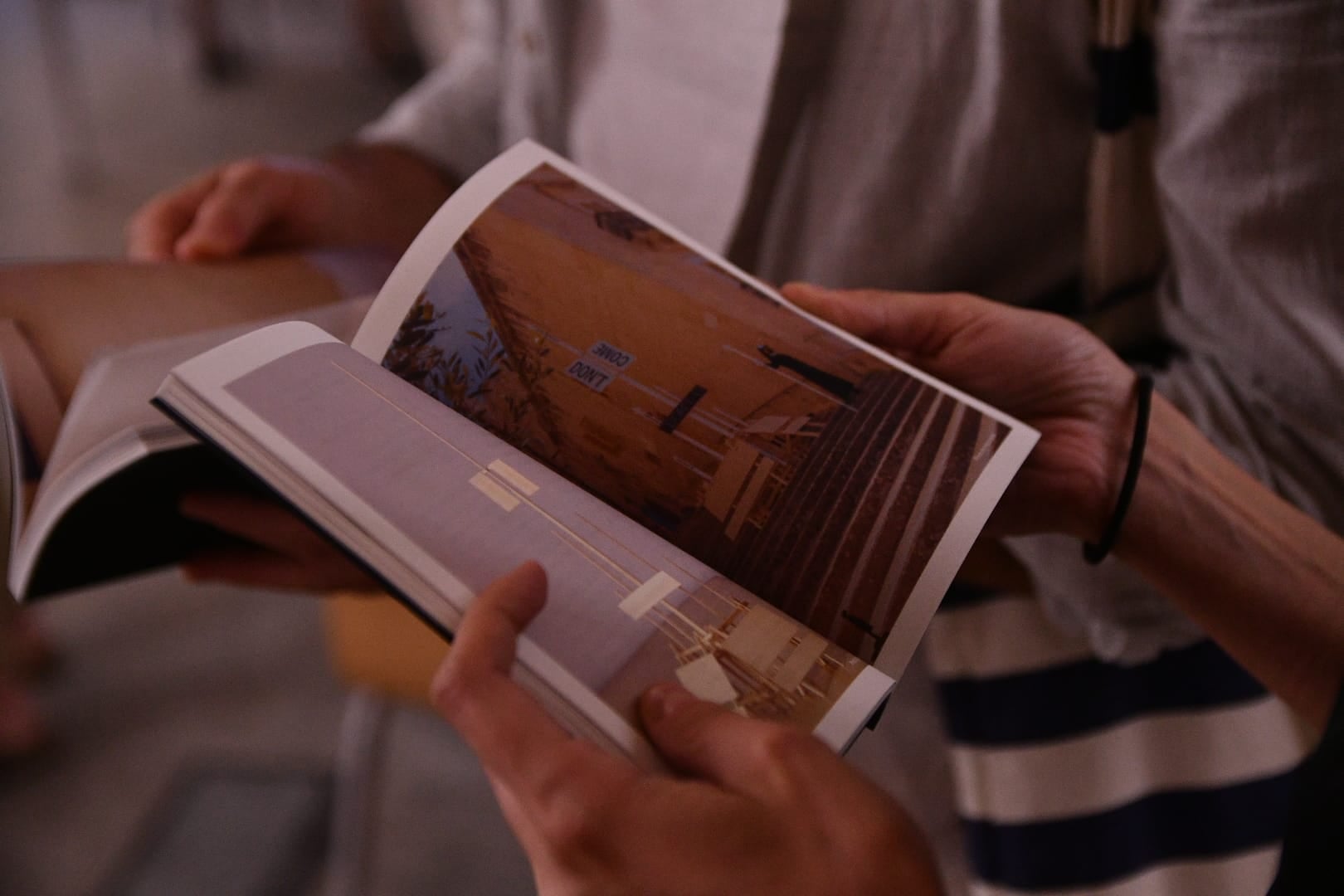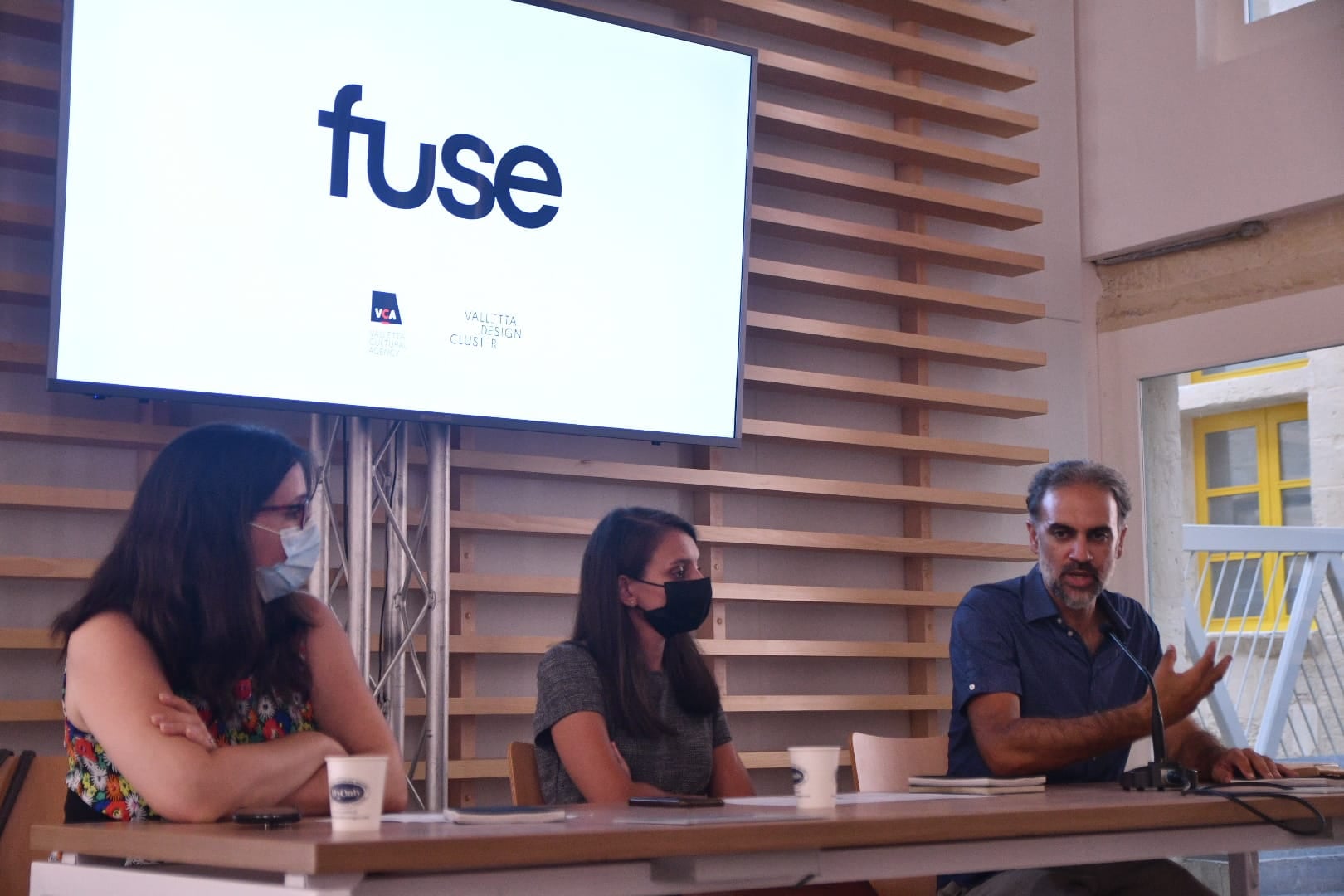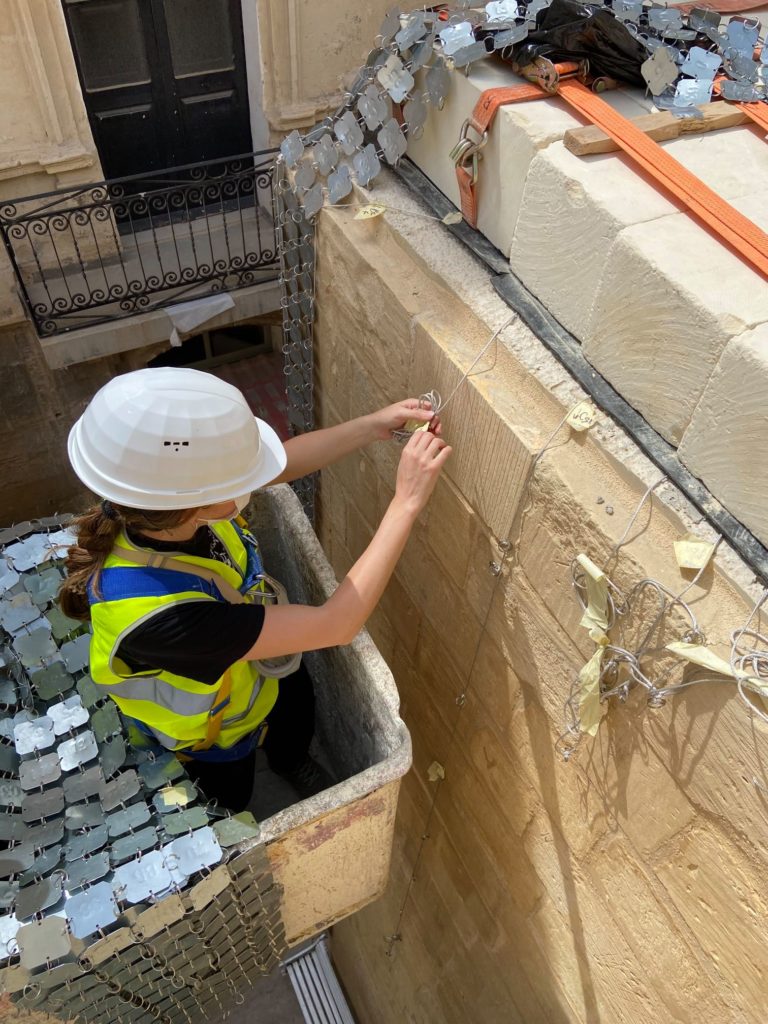Last week of fuse; 8 public art installations celebrating traditions, identities, and stories of the people who lived in the Old Abattoir


Have you walked by the newly established Valletta Design Cluster and came across a series of outstanding art installations surrounding the entire area? This is fuse, a collaborative visual art and research project in response to the communities and contexts surrounding the Old Abattoir building in Valletta. Eight artists and collectives are exhibiting their works including Aaron Bezzina, Victor Agius, Tom van Malderen, Laura Besancon, Noah Fabri, Fatima AM, and Chakib Zidi, Text Catalogue, and Andrea Zerafa, Samuel Ciantar, Giola Cassar, and Aprille Zammit.
As part of the closing week for the contemporary visual arts exhibition fuse, the Valletta Cultural Agency, in collaboration with the Valletta Design Cluster, has organizing a series of events and activities related to the various aspects of this project. Events, including a book launch, artist-curator talks, curator tours, presentations, and screenings, are taking place during the exhibition’s closing week, between the 10th and the 16th of July at the Valletta Design Cluster. See Full Schedule here



This exhibition, which comprises eight public art installations outside the newly opened Valletta Design Cluster, celebrates traditions, identities, and stories of the people who lived in the Old Abattoir – a building with over 400 years of history. The process in preparation for the exhibition fuse, led by curator Elyse Tonna and her team over 18 months, started from text-based theoretical concepts molded on community stories and through discussions that reflected the thematics associated with their work.

A tapestry of 5,000 ċipep or ċombi, Ix-Xuwa represents the eight bakeries and the vast and large community which used to live in the Biċċerija area. The artwork accesses stories and histories at various levels – the kids who used to take the dish with the Sunday roast to the bakery and their many stories as well as recent Maltese history.

‘Refraction’ highlights connections between land and sea, focusing on what attracts people to the shoreline of the Fossa area. This is a play between photography and screen printing, through the ever-changing textures and objects extracted from narratives linked to the area.

Laura Besançon’s photographic and sculptural intervention ‘Infrastructures of Care’ contemplates exchange between humans, man-made structures, non-human communities and surrounding landscapes. Drawing upon aspects related to development, care and co-existence, this work focuses mainly on the cats that live in St Charles Street and the Biċċerija area, in the context of the Old Abattoir – the current Valletta Design Custer – and in the context of the building the ex-slaughterhouse.

Ħaġar Karmel is a sculptural intervention that echoes old traditions recounted by residents while adorning, with imposing decorations, the historic niche of Our Lady of Mount Carmel above the old fountain of the Biċċerija, often referred to as Is-Serp.It also draws on the iconography of Prophet Elijah’s sacrifice on Mount Carmel. This abstract work draws inspiration from primordial, primitive elements.Victor Agius presented his work as a dialogue with the niche of Our Lady while the animals that are an intrinsic part of the sculpture directly refer to the Biċċerija, which was used as a slaughterhouse for some years during the time of the Knights. This work was developed in dialogue with members of the Our Lady of Mount Carmel feast association and was almost a co-creation where all the elements discussed have been reinterpreted into the sculptural intervention.

This intervention reflects on the theme of Displacement – one of the nine curatorial themes of the fuse. The fluidity of the parameters defining the Biċċerija area is personal, everchanging, and complex, entirely based as a consequence of constructs. Although its exact boundaries cannot be essentially delineated, the abundance of interpretations and the blurred distinction between one area and another resembles the notion of a continuously developing space. The Biċċerija area is essentially identified by the previous use of a building that became a focal point of a community. It is situated in close proximity to other zones in Valletta including il-Baviera and Dui Balli, which have certain commonalities and essential differences.

Seesaw is a kinetic sculpture derived from the notion of surveillance and the element of play. The sphere and its modes of movement are recurring elements in the games played in the streets throughout the years. This intervention reflects one of the nine curatorial thematics of fuse, Synergy. The streets of the area surrounding the Old Abattoir are witness to children’s games such as noli, erbgħa kantunieri, ball-rails, logħob bil-ballun taċ-ċarruta etc. – everyday games reminiscent of villages where families interacted in the streets, day and night.

Ciantar’s artistic research involves the relationship between human beings and the spaces they live in, as well as the objects they use and how these can integrate with ecological systems.Divided into three parts, this work involves two street installations consisting of furniture pieces that have been modified to serve as planters, as well as a soundscape created to enhance the experience playing sounds generated by plants devoloped with sound artist Jamie Barbara and video artist Jacob Saliba. These works tie in beautifully with the street plants that are well cared for by residents. The artist’s wish is to create a conversation regarding the co-existence between the different types of life which are more in sync with natural processes whose street life is remembered as vibrant and warm.

A multimedia performance piece created alongside former residents of the Biċċerija, Paġġatur explores the liminal links between identity, the public and the personal, domesticity and a closely knit community through the dynamic nature of the physical space.This intervention reflects one of the nine curatorial thematics of fuse, Familiarity. An isolated and sheltered structure, the physical fabric of the Biċċerija building is synonymous for being almost self-sufficient in nature. With the lower floor of the Old Abattoir building dedicated to commercial purposes, the majority of which were bakers of bread, confections and home-cooked meals, the upper floors were kerrejja, housing multiple families. From generation to generation, families who inhabited the Biċċerija building were well-known by their nicknames, most of them until this very day. The poġġaturi were spaces extending beyond the kerrejja of the Old Abattoir and synonymous with the washing of clothes and the gossiping of housewives.

” fuse is not just a project that connects artists with community or art with the context, but it’s much more.”
Elyse Tonna is an architect, cultural manager and curator. She is interested in contemporary visual arts yet creates and manages projects within the creative sector. She is the Arts Coordinator of ACT and works at the Gabriel Caruana Foundation. Elyse has worked on a number of projects and exhibitions with various upcoming and established artists and institutions on the Island. For the past year and a half she has been working on building fuse, a multilayered project fusing artist to community, community to community and communities to their surroundings. Elyse has become a familiar face to the residents residing around the Old Abattoir building in Valletta, building relationships and integrating artists within the community and the context surrounding the area. Learn more about how fuse has been developed and why here



If you are still in time for attending any events related to fuse, make sure to register before attending by sending an email to [email protected]. COVID-19 protocols will strictly be followed, including scanning of vaccination certificates at the entrance.
This project is produced by Valletta Cultural Agency, learn more about new upcoming events and opportunities here.
A whole new year, with all new art exhibitions. Find out what local Artists, Galleries, Museums and organisations have been working on and discover what…
What have local artists been working on recently? What have they got in store for you over the coming weeks and months? We’ve put together…
A whole new year , with all new art exhibitions. Find out what local Artists, Galleries, Museums and organisations have been working on and discover…
What have local artists been working on recently? What have they got in store for you over the coming weeks and months? We’ve put together…
In the previous months, what felt like an unanticipated halt, to the viewing and attending of art exhibitions is now no longer an intimidating affair.…
| Cookie | Duration | Description |
|---|---|---|
| cookielawinfo-checbox-analytics | 11 months | This cookie is set by GDPR Cookie Consent plugin. The cookie is used to store the user consent for the cookies in the category "Analytics". |
| cookielawinfo-checbox-functional | 11 months | The cookie is set by GDPR cookie consent to record the user consent for the cookies in the category "Functional". |
| cookielawinfo-checbox-others | 11 months | This cookie is set by GDPR Cookie Consent plugin. The cookie is used to store the user consent for the cookies in the category "Other. |
| cookielawinfo-checkbox-necessary | 11 months | This cookie is set by GDPR Cookie Consent plugin. The cookies is used to store the user consent for the cookies in the category "Necessary". |
| cookielawinfo-checkbox-performance | 11 months | This cookie is set by GDPR Cookie Consent plugin. The cookie is used to store the user consent for the cookies in the category "Performance". |
| viewed_cookie_policy | 11 months | The cookie is set by the GDPR Cookie Consent plugin and is used to store whether or not user has consented to the use of cookies. It does not store any personal data. |
Responses